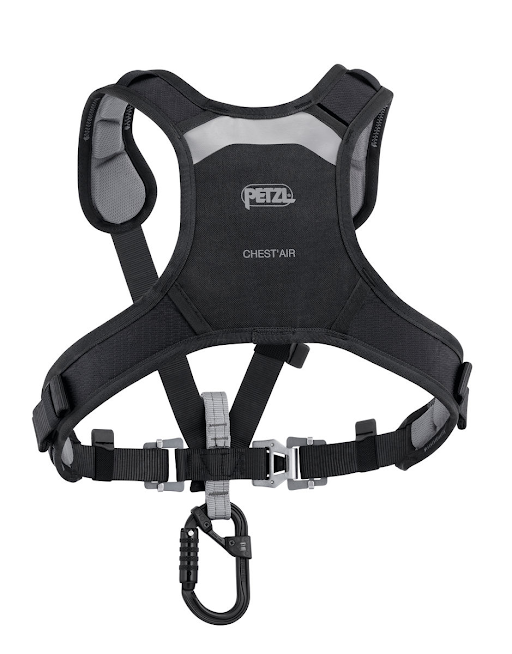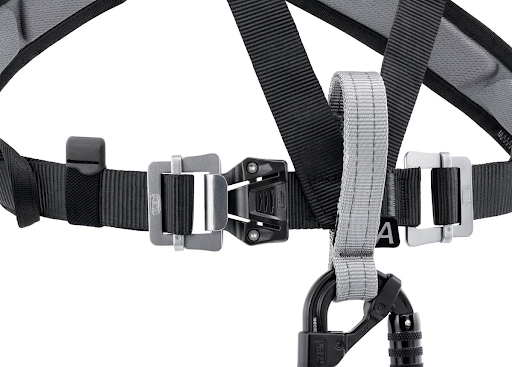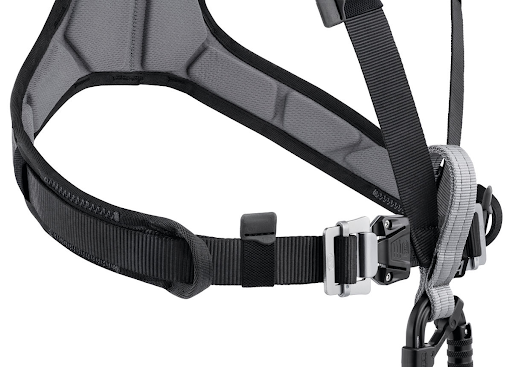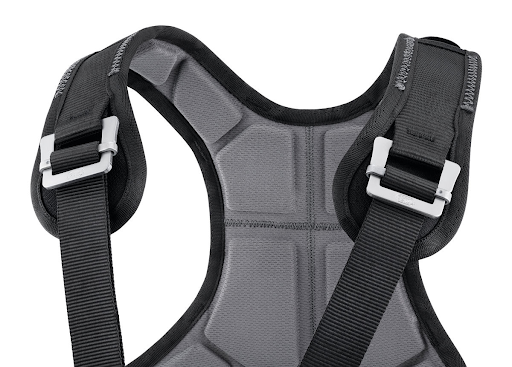CHEST’AIR
The CHEST’AIR is an amazing chest harness designed to work with seat harnesses. It has the power to transform popular seat harnesses like FALCON, FALCON MOUNTAIN, AVAO SIT, and SEQUOIA SRT into reliable fall - arrest harnesses. With multiple important certifications including CE EN 361, CE EN 12277 type D, UKCA, and EAC, this chest harness can be attached to climbing or mountaineering seat harnesses. It's a great help in keeping a victim upright during a rescue operation, such as helicopter evacuations.
One of its key features is how easy it is to use. It simply connects to the ventral attachment point of the seat harness and fastens at the chest using the FAST LT buckle, allowing for quick donning even when you're wearing thick clothing. The DOUBLEBACK self - locking buckles on the shoulder and ventral straps make it a breeze to adjust, adapting well to different body types.
Comfort is also a top priority. The CHEST’AIR is made with 3D foam padding on the back and shoulder straps. These straps are widely spaced, reducing chafing and giving you extra comfort while hanging. And when the textile sternal attachment point is not in use, it won't get in your way.
There are also two equipment loops on the sides, perfect for carrying small equipment. Weighing only 525g and with a maximum chest size of 140 cm, it's a practical and lightweight choice. Whether you're a professional climber or involved in rescue missions, the CHEST’AIR chest harness is a versatile and comfortable option.




Using the CHEST’AIR chest harness is a straightforward process. First, connect it to the ventral attachment point of your seat harness using the OK TRIACT - LOCK carabiner. Then, fasten the harness at your chest with the FAST LT buckle. You can adjust the shoulder and ventral straps easily using the DOUBLEBACK self - locking buckles to fit your body type. When you're done using it, just unfasten the buckle at the chest to remove it.
When using the harness, make sure it's properly connected and adjusted. Check the certifications to ensure it meets the safety standards for your activities. Also, always follow the relevant safety regulations and guidelines.
For maintenance, keep the harness clean. You can gently wipe it with a damp cloth if it gets dirty. Store it in a cool, dry place away from direct sunlight and sharp objects. Regularly inspect the harness for any signs of wear and tear, such as frayed straps or damaged buckles. If you notice any issues, don't use the harness and replace it immediately.